A slant needle sewing machine is a specialized sewing device designed to enhance sewers’ visibility and ease of use.
Unlike traditional vertical machines, the slant needle model features a needle set at a slight angle, providing a better view of the stitching area.
Introduced by sewing machine manufacturers like Singer in the mid-20th century, the slant needle design aimed to improve the overall sewing experience by reducing eye strain and allowing for more precise stitching.
This innovative configuration remains popular among enthusiasts and professionals, offering a unique, ergonomic solution to achieve accurate and visually accessible sewing results.
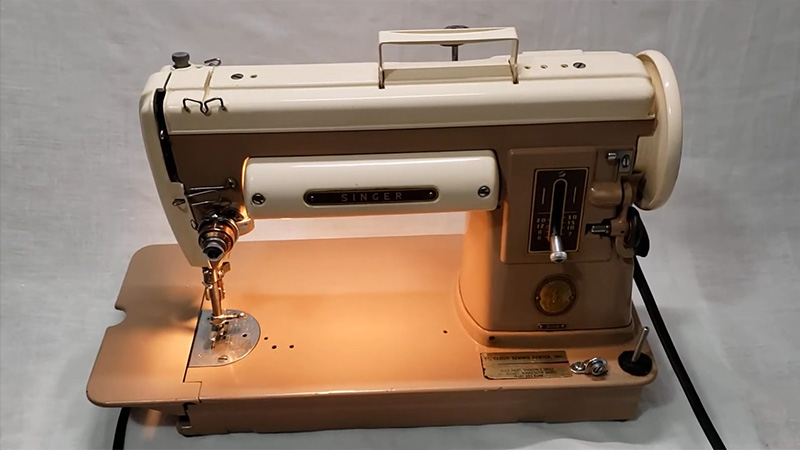
What Is a Slant Needle Sewing Machine?
A slant needle sewing machine refers to a type of sewing machine where the needle is positioned at a slant or diagonal angle rather than directly perpendicular to the fabric.
This design innovation was introduced by the renowned sewing machine manufacturer Singer in the mid-20th century.
The slant needle configuration offers several advantages, such as improved visibility of the sewing area and easier fabric insertion.
This design enhances the user’s ability to manipulate and guide the fabric precisely, resulting in more accurate stitching.
Additionally, the slant needle sewing machines often have a built-in zigzag stitch, expanding their versatility for various sewing projects.
The user-friendly design and functional benefits make slant needle sewing machines popular among beginners and experienced seamstresses.
Advantages of Using a Slant Needle Sewing Machine
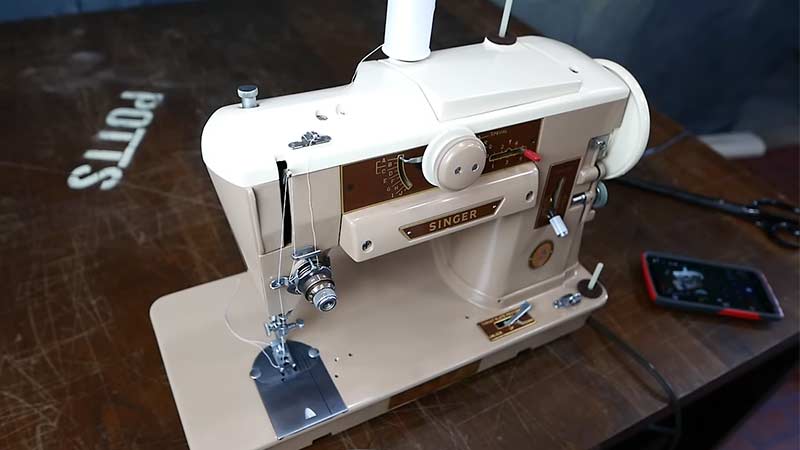
A slant needle sewing machine, also known as a slant shank sewing machine, is a type of sewing machine that features a slanted needle bar.
This design innovation offers several advantages to users, making it a popular choice among sewing enthusiasts.
Here are the key advantages of using a slant needle sewing machine:
Improved Visibility
The slanted needle bar in a sewing machine significantly enhances the visibility of the sewing area. With the needle positioned at an angle, users have a clearer line of sight to the fabric and the stitching path.
This is especially beneficial when working on intricate details, ensuring precise stitching and minimizing errors.
The improved visibility can be particularly advantageous for tasks such as appliqué work or any project that requires meticulous accuracy.
Easier Threading
Threading a slant needle sewing machine is generally more straightforward than machines with vertical needles.
The slanted design makes the needle more accessible, reducing the frustration often associated with threading.
This feature is particularly helpful for individuals new to sewing or those with visual challenges, as it simplifies the threading process and minimizes the risk of thread breakage or misplacement.
Quilting and Free-Motion Sewing
The slant needle design is especially well-suited for quilting and free-motion sewing. The improved visibility and maneuverability the slanted needle provides make it easier for users to guide the fabric in various directions.
Quilters appreciate the enhanced control when creating intricate patterns, while those engaging in free-motion embroidery can capitalize on the increased precision the slant needle design offers.
Reduced Fabric Distortion
Slant needle machines often feature a horizontal presser foot motion, which plays a key role in minimizing fabric distortion during sewing.
This horizontal motion helps prevent the fabric from being pulled or stretched unevenly, making it an ideal choice for working with delicate materials or stretched fabrics.
Reduced fabric distortion contributes to the completed projects’ overall quality and professional finish.
Versatility
Many slant needle machines have many built-in stitches and features, enhancing their versatility for different sewing projects.
Whether you’re working on basic garment construction or engaging in more complex decorative stitching, these machines offer diverse options.
The ability to choose from various stitches and settings allows users to explore their creativity and adapt the machine to the specific requirements of each project.
Durability and Stability
The slant needle design not only improves functionality but also contributes to the overall durability and stability of the sewing machine.
The angled needle positioning often produces a more robust machine structure, reducing vibrations during operation.
This increased stability enhances the machine’s longevity and ensures a smoother and more enjoyable sewing experience for users.
Compatibility with Attachments
Slant needle machines are commonly designed to be compatible with various attachments and accessories.
This includes specialized presser feet, walking feet for even fabric feeding, and quilting attachments.
The versatility in attachments expands the capabilities of the sewing machine, allowing users to take on a broader range of projects with ease.
Whether adding decorative elements or working on specific techniques, the compatibility with various attachments enhances the machine’s functionality and adaptability.
Issues Arise When Using a Slant Needle Sewing Machine
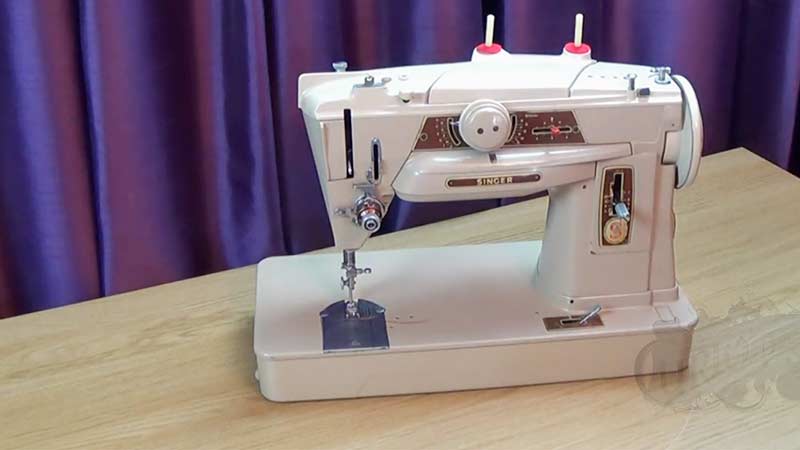
While slant needle sewing machines offer various advantages, like any piece of equipment, they are not without potential issues.
Users must know these challenges to troubleshoot effectively and ensure optimal performance.
Here are some common issues that may arise when using a slant needle sewing machine:
Limited Needle Compatibility
One of the challenges with slant needle machines is the limited availability of needle options.
Unlike machines with a vertical needle orientation, slant needle machines often require specific needles designed for their unique angle.
This limitation can sometimes make finding the right needle for a particular fabric or project more challenging, especially if specialized needle types are needed.
Difficulty in Finding Replacement Parts
As slant needle machines may have a less common design, finding replacement parts can be more challenging than mainstream sewing machines.
If a specific part needs replacement due to wear or malfunction, users may face difficulties locating the required components. This can result in longer downtimes and potentially higher costs for repairs.
Thread Tension Challenges
Achieving the correct thread tension can be more sensitive on slant needle machines. Users may find it trickier to balance the tension properly, leading to issues like loose or tight stitches.
Adjusting the thread tension may require more attention and experimentation, especially when transitioning between different fabrics or thread types.
Limited Presser Foot Options
The availability of presser feet for slant needle machines may be somewhat limited compared to standard sewing machines.
Users might find locating specialized presser feet for specific tasks challenging, limiting the machine’s versatility.
This can be a concern for those who frequently engage in various sewing techniques that require different presser feet.
Maintenance and Servicing Complexity
Due to the unique design of slant needle machines, their maintenance and servicing might be more complex.
Accessing certain components or adjusting internal mechanisms may require additional expertise or specialized tools.
Users may need to rely on experienced technicians for routine maintenance or repairs, which can be a consideration for those who prefer more user-friendly machines.
Cost Considerations
Slant needle sewing machines, especially those with advanced features, may be priced higher than conventional models.
While the machine’s capabilities may justify the initial investment, users should be aware of potential costs associated with specialized accessories, needles, or replacement parts.
Learning Curve for New Users
For individuals accustomed to traditional vertical needle sewing machines, transitioning to a slant needle model may involve a learning curve.
Threading, adjusting settings, and troubleshooting issues may differ from what users are accustomed to, requiring some time and practice to become proficient with the new machine.
10 Sewing Projects Are Best Suited for a Slant Needle Sewing Machine
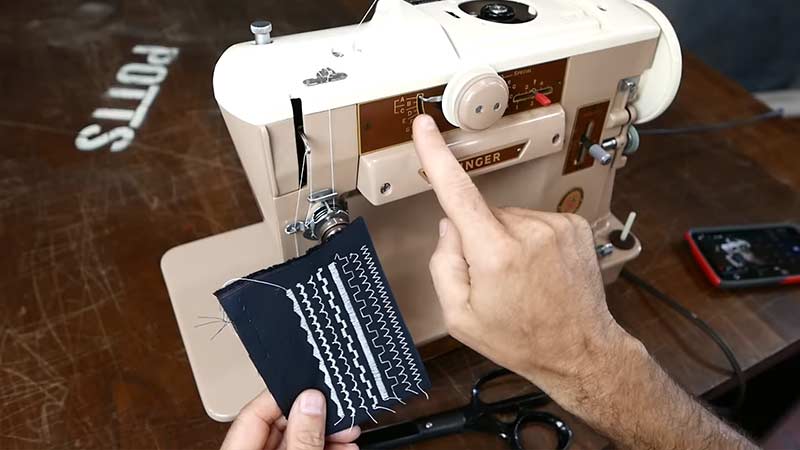
Slant needle sewing machines are versatile tools that can handle various sewing projects.
The unique design of these machines, with a needle set at a slant, makes them particularly well-suited for certain types of sewing tasks.
Here are some sewing projects that are best suited for a slant needle sewing machine:
1. Quilting
Slant needle machines are excellent choices for quilting projects. The slanted needle allows for improved visibility and maneuverability, making it easier to navigate through layers of fabric when piecing together quilt blocks.
The enhanced control and visibility contribute to the accuracy and precision required for intricate quilting patterns.
2. Free-Motion Embroidery
Artists and crafters who enjoy free-motion embroidery will appreciate the advantages of a slant needle machine.
The slanted design enables users to move the fabric more freely in all directions, facilitating intricate and detailed embroidery work.
The improved visibility of the needle and stitching area enhances control, allowing for creative expression in free-motion projects.
3. Appliqué Work
Slant needle machines are ideal for appliqué work, where precision and visibility are crucial. The slanted needle provides a clear line of sight to the fabric, making it easier to follow the edges of appliqué pieces.
This is particularly beneficial when working on small or intricate appliqué designs, ensuring neat and accurate stitching.
4. Garment Construction and Alterations
Slant needle machines are well-suited for general garment construction and alterations. The improved visibility of the stitching area makes it easier to sew seams accurately and follow garment patterns.
The versatility of these machines allows users to work with various fabrics, making them suitable for creating or modifying clothing items.
5. Decorative Stitching
The wide range of built-in stitches often available in slant needle machines makes them excellent for decorative stitching.
Whether adding embellishments to garments, creating decorative borders on linens, or sewing decorative elements on accessories, these machines offer the versatility needed for creative and personalized projects.
6. Home Décor Sewing
Slant needle machines are well-suited for sewing home décor items. From crafting curtains and drapes to making throw pillows and cushion covers, these machines’ enhanced visibility and stability contribute to professional-looking results.
The ability to handle a variety of fabrics, including heavier materials, makes them versatile for different home décor projects.
7. Quilt Binding
Quilt binding requires precision and control to ensure a neat and durable finish. Slant needle machines provide the necessary visibility and accuracy for sewing quilt binding with ease.
The slanted needle design helps guide the fabric smoothly, resulting in clean and well-finished quilt edges.
8. Specialty Fabrics
Slant needle machines are often equipped to handle a variety of fabrics, including specialty materials like knits and stretch fabrics.
The reduced fabric distortion due to the horizontal presser foot motion makes them suitable for delicate or elastic fabric projects.
Is Singer 301 a Slant Needle?
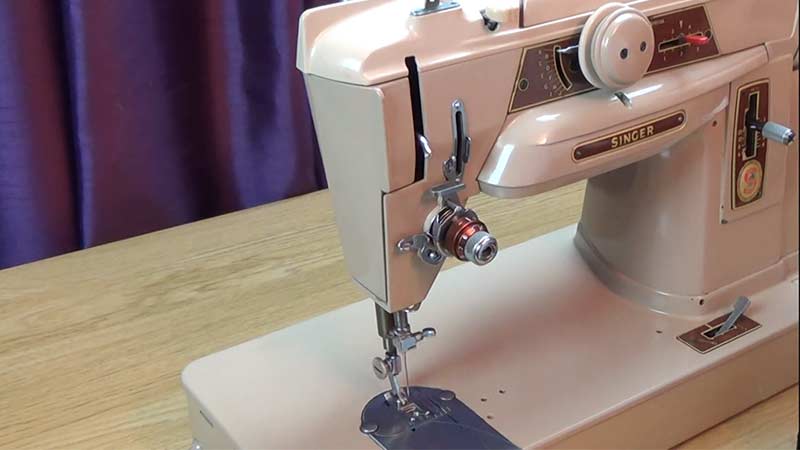
No, the Singer 301 is not a slant needle sewing machine. The Singer 301 is a vintage, straight-stitch sewing machine introduced in the late 1950s.
It is part of the Singer 300 series and is known for its strong, durable construction and impressive sewing capabilities.
Unlike slant needle machines, the Singer 301 features a vertical needle orientation. The needle is positioned straight up and down during operation.
The machine has a unique look with a streamlined, portable design and a flip-up extension bed, making it popular among sewing enthusiasts.
Singer Slant Needle Models
Singer slant needle models refer to a series of sewing machines produced by the Singer Corporation, characterized by the unique slanting orientation of the needle.
These machines were introduced in the late 1950s and continued through the 1960s. The slant needle design was a distinctive feature to improve visibility and ease of sewer use.
Here are some notable Singer slant needle models:
Singer 301
While the Singer 301 is not a slant needle model, it is often mentioned in discussions about slant needle machines due to its introduction around the same time.
The Singer 301 is a straight-stitch machine with a vertical needle orientation, known for its sturdy build and portable design. It remains a popular choice among vintage sewing machine enthusiasts.
Singer 401A
The Singer 401A is one of the iconic slant needle models. It features a unique slanted needle design for improved visibility and a forward-facing gear-driven mechanism.
This model offers a variety of built-in stitches and is renowned for its durability and versatility. The Singer 401A is considered a classic among vintage sewing machines.
Singer 500A (Rocketeer)
The Singer 500A, commonly known as the “Rocketeer,” is another popular slant needle model. Introduced in the early 1960s, it boasts a stylish design and a range of built-in decorative stitches.
The slant needle and gear-driven mechanism make it a favorite among sewers for its ease of use and reliability. The Rocketeer is highly regarded for its ability to handle various sewing tasks.
Singer 503A
The Singer 503A is a close relative of the 500A (Rocketeer) and shares many features. It is a slant needle machine that includes a variety of stitches, making it suitable for utility and decorative sewing. The 503A is known for its smooth operation and durability.
Singer 600 Series
The Singer 600 series includes slant needle models like the 604, 620, and 630. These machines continued the tradition of the slant needle design, offering a range of utility and decorative stitches.
They are equipped with a forward-facing gear-driven mechanism, providing users with a smooth and reliable sewing experience.
Singer 700 Series
The Singer 700 series, which includes models like the 703, 706, and 708, is another set of slant needle machines.
These models are known for their versatility and durability, featuring a variety of stitches and user-friendly features. The slant needle design remains a consistent feature in this series.
Singer 900 Series
The Singer 900 series, including models like the 920 and 930, continued the legacy of slant needle machines.
These models offer an extended range of built-in stitches, making them suitable for various sewing projects. The slant needle design enhances visibility and ease of use.
FAQs
What advantages does it offer?
Slant needle machines provide better visibility, making them suitable for quilting, free-motion sewing, and appliqué work. They also ease threading and reduce fabric distortion.
Are slant needle machines suitable for beginners?
Their enhanced visibility and user-friendly features make them suitable for beginners with a slight learning curve.
What projects are best for slant needle machines?
Ideal for quilting, free-motion embroidery, and precision projects, they’re versatile for garment construction, decorative stitching, and specialty fabrics.
Can standard needles be used?
No, slant needle machines require specific needles designed for their angle to prevent threading and stitching issues.
To Recap
A slant needle sewing machine is a distinctive type of sewing apparatus where the needle is set at a tilted angle, deviating from the traditional vertical orientation.
This design innovation offers advantages such as enhanced visibility and ease of threading, making it particularly suitable for tasks like quilting, free-motion embroidery, and appliqué work.
The slant needle’s versatility extends to garment construction, decorative stitching, and handling specialty fabrics.
Although requiring specific slant needle types, these machines are user-friendly and cater to beginners and experienced sewers.
Their unique features contribute to precision and efficiency, making slant needle sewing machines valued tools in the crafting and sewing community.
Leave a Reply